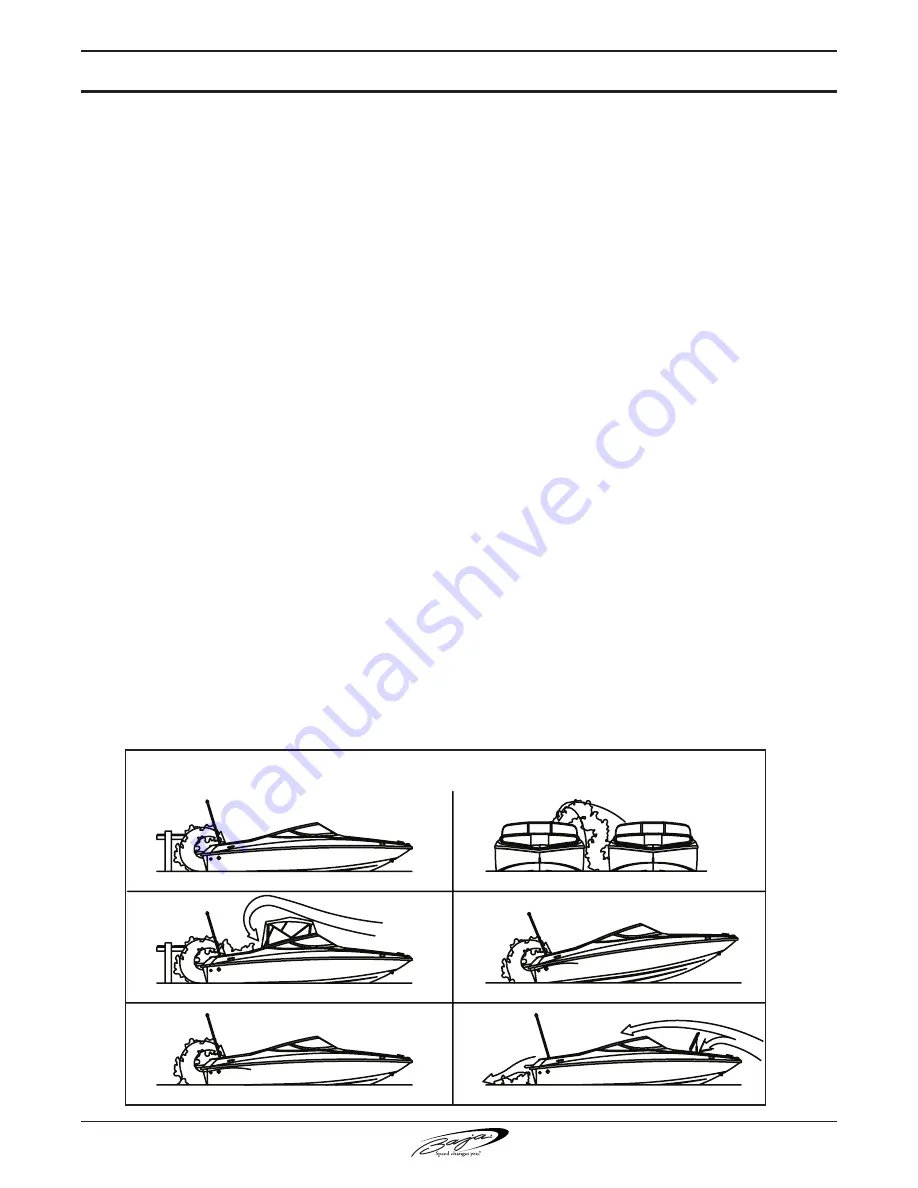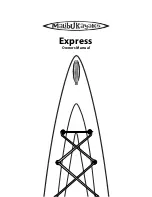
342 Performance
®
1.3
S
ection
1 • S
afety
symptoms of carbon monoxide poisoning are dizziness,
ears ringing, headaches, nausea, and unconsciousness.
get fresh air if anyone shows signs of carbon monoxide
poisoning, and/or if carbon monoxide detector alarm
sounds.
a poisoning victim's skin often turns cherry red. Because
carbon monoxide gas (CO) is odorless, colorless and
tasteless, it is unlikely to be noticed until a person is
overcome.
Dangerous concentrations of carbon monoxide will be
present if:
• there is an exhaust leak
• a nearby vessel's engine is running
• insufficient fresh air is circulating where people are
present
• fumes move from the rear of the boat into the cockpit
and cabin area
figure 1.3.1 gives examples of boat operating conditions
that can lead to high concentrations of carbon monoxide
gas.
To minimize the danger of CO accumulation when the
engine is running or using fuel burning appliances:
• Be sure to have sufficient ventilation when using
canvas or window-type side curtains when underway,
anchored, moored, or docked.
• If a convertible or camper top is installed, operate
with the forward hatch open and leave cabin door
open.
• Operate all fuel burning appliances, such as charcoal,
propane, lPg, Cng, or alcohol cooking devices in
areas where fresh air can circulate. Do not use such
devices where there is no noticeable air movement,
especially in the cabin, when anchored, moored, or
docked.
• Do not idle engine without moving boat for more than
15 minutes at a time.
• Inspect exhaust system regularly. (see section 8,
Required Inspection, service and Maintenance.)
If CO poisoning is suspected, have the victim breathe
fresh air deeply. If breathing stops, resuscitate. a
victim often revives, then relapses because organs are
damaged by lack of oxygen. seek immediate medical
attention.
c
arbon
M
onoxiDe
M
oniTor
your boat may have a carbon monoxide (CO) monitor
mounted in the cabin. The CO monitor is an electronic
instrument that detects CO. When there is a build-up of
CO in the cabin, the monitor will alert the occupants by
a flashing DANGER light and alarm.
Read and understand the CO monitor information and
operating instructions. It is extremely important that you
become totally familiar with your CO monitor and its
functions.
e
xamPleS
of
h
ow
h
igh
l
evelS
of
c
arBon
m
onoxide
m
ay
a
ccumulate
(f
ig
1.3.1)
Blocking hull Exhausts. Operating
at slow speed or dead in the water.
Using canvas curtains.
Winds blowing exhaust
toward boat occupants.
Operating engine and/or generator
in confined spaces.
Operating with the bow high.
good ventilation.
Illustration #D
Illustration #E
Illustration #F
Illustration #A
Illustration #B
Illustration #C
Summary of Contents for Performance 342
Page 4: ...ii 342 Performance this page intentionally left blank ...
Page 28: ...342 Performance 1 18 R Speed changes you TM This Page Intentionally Left Blank ...
Page 51: ...342 Performance 5 4 Section 5 Fuel System this page intentionally left blank ...
Page 60: ...6 9 342 Performance R Speed changes you TM This Page Intentionally Left Blank ...
Page 83: ...9 4 Section 9 Care Refinishing 342 Performance This Page Intentionally Left Blank ...
Page 85: ...Index 342 Performance This Page Intentionally Left Blank ...














































